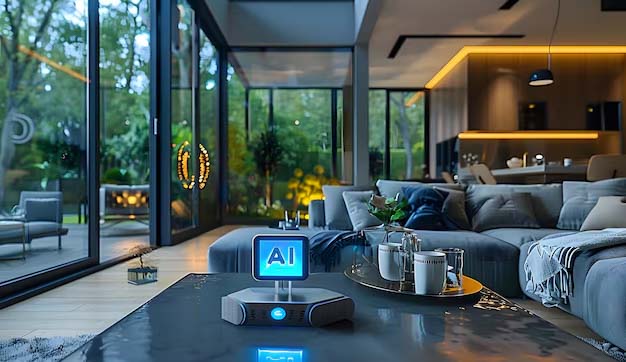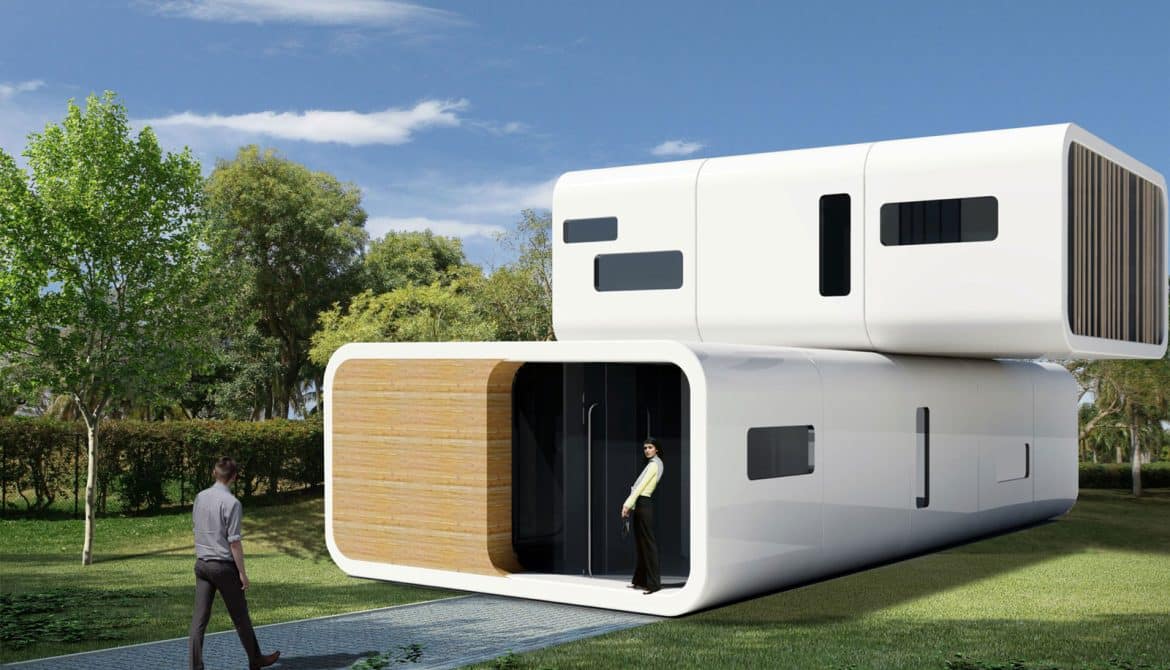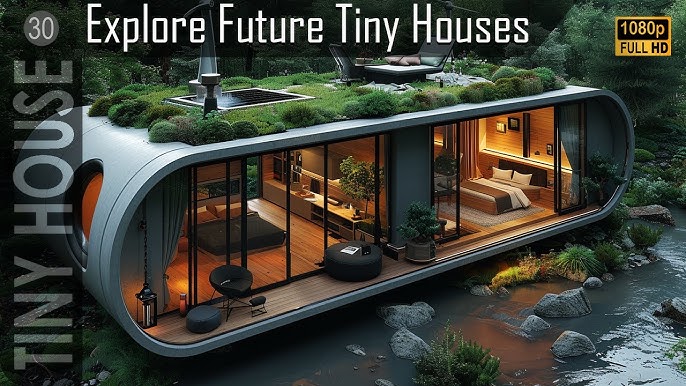Introduction: Why 2025 Is the Breakthrough Year for IoT
The Internet of Things (IoT) has moved from being a futuristic concept to a daily reality shaping our lives in ways many never imagined. As 2025 unfolds, the IoT landscape is evolving faster than ever — fueled by advances in artificial intelligence, edge computing, and wireless connectivity. This year marks a tipping point where connected devices seamlessly blend into our routines, empowering smarter homes, healthier lifestyles, and more efficient work environments.
From smart thermostats adapting to your schedule, to wearable tech constantly monitoring your health, IoT is no longer just about convenience — it’s about transforming our quality of life.
How IoT Connects Us: A Quick Overview
At its core, IoT is a network of devices embedded with sensors, software, and connectivity — enabling them to collect and exchange data. This interconnected web allows for automation, data-driven decision making, and enhanced control. Think beyond phones and computers: IoT devices include smart appliances, health monitors, industrial machinery, vehicles, and even entire city infrastructures.
The combination of sensors, data, and real-time communication is opening doors to new possibilities across sectors, fundamentally changing how we interact with technology and the environment around us.
Smart Homes and Living Spaces — The Heartbeat of Modern Comfort
One of the most visible and popular IoT applications is smart homes. Today’s smart homes do much more than switch lights on and off remotely — they learn your habits, anticipate your needs, and create a comfortable, efficient living environment.
Smart lighting systems adjust brightness and color based on time of day or mood. Smart thermostats optimize heating and cooling to save energy while keeping you cozy. Voice assistants streamline control over music, security, and appliances — all from a simple command.
Table 1: Comparison of Top Smart Home Ecosystems (2025)
| Feature | Amazon Alexa | Google Home | Apple HomeKit |
|---|---|---|---|
| Device Compatibility | 20,000+ devices | 15,000+ devices | 10,000+ devices |
| Voice Assistant | Alexa | Google Assistant | Siri |
| Security Features | Multi-factor, encryption | AI threat detection | End-to-end encryption |
| Automation & Routines | Highly customizable | AI-driven suggestions | Home automations with Shortcuts |
| Ecosystem Integration | Strong with Amazon services | Google services & Nest | Apple devices & iCloud |
| Popular Devices | Echo, Ring, Fire TV | Nest Hub, Chromecast | HomePod, Apple TV |
Smart homes today aren’t just about gadgets — they’re about creating an ecosystem that adapts to you, reducing friction and elevating comfort.

Revolutionizing Everyday Life: The Top IoT Innovations You Can’t Ignore in 2025
Wearables and Health Tech — Your Personal Wellness Companion
Wearable technology has shifted from simple fitness trackers to sophisticated health monitors. Smartwatches and health bands now track heart rate variability, blood oxygen levels, sleep quality, and even stress indicators — all in real time.
The pandemic accelerated adoption of remote health monitoring, and 2025 sees wearables integrated deeply with healthcare providers. Devices can detect anomalies early, alert doctors, and provide personalized health insights — moving healthcare from reactive to proactive.
Chart 1: Growth of Wearable Devices Market 2015–2025
(Data sourced from IDC and Statista)
| Year | Devices Sold (Millions) | Market Growth (%) |
|---|---|---|
| 2015 | 54 | — |
| 2016 | 72 | 33% |
| 2017 | 98 | 36% |
| 2018 | 133 | 36% |
| 2019 | 180 | 35% |
| 2020 | 240 | 33% |
| 2021 | 310 | 29% |
| 2022 | 380 | 23% |
| 2023 | 430 | 13% |
| 2024* | 470 | 9% |
| 2025* | 510 | 8.5% |
(*Projections)
With such growth, wearables are no longer a luxury but a daily essential for millions, empowering people to take control of their wellness.
IoT in Daily Productivity — From Smart Assistants to Connected Vehicles
IoT also fuels productivity in ways that seamlessly integrate into our daily workflows. Smart assistants not only manage reminders but can coordinate schedules, handle emails, and control smart office equipment. Connected vehicles provide real-time diagnostics, optimize routes, and enhance safety through continuous data exchange.
These improvements reduce mundane tasks, allowing you to focus on what truly matters — creativity, collaboration, and living fully.
The Role of AI and Edge Computing in Enhancing IoT
AI powers the brain of IoT, interpreting the massive volumes of data generated to make intelligent decisions and predictions. Edge computing complements this by processing data near the source, reducing latency and bandwidth needs — vital for real-time responses.
Together, AI and edge computing unlock new use cases: from instant alerts in healthcare wearables to autonomous smart factories reacting dynamically to changing conditions.
Real-life Success Stories: How IoT Changed Lives
Consider Sarah, a busy working mom whose smart home adjusts lighting and temperature to her routine — helping her kids study better and improving family sleep patterns. Or Mark, a remote patient with a wearable device that alerts his doctor instantly when irregular heart rhythms occur, preventing emergencies.
These stories reflect the profound, personal impact IoT has beyond the tech headlines.
Summary and Key Takeaways
2025 isn’t just another year for IoT — it’s the year when connected technologies become truly intertwined with daily life. Smart homes offer comfort and energy efficiency, wearables empower health management, and AI-driven systems boost productivity. The foundation is set for deeper innovations that will ripple through every facet of how we live.
Industrial IoT: The Backbone of Smart Manufacturing
The industrial sector is experiencing an unprecedented transformation thanks to IoT, often called IIoT (Industrial Internet of Things). Factories are becoming smarter, more efficient, and less wasteful by connecting machines, sensors, and data analytics in real-time.
IIoT allows predictive maintenance — spotting potential breakdowns before they happen — and optimizes production lines by dynamically adjusting operations based on incoming data. This reduces downtime, cuts costs, and increases output quality.

smart-homes-smart-home-smart-home-devices-smart-home-technology-modern-luxury-interior-modern-house
Table 1: Key Benefits of IIoT for Businesses in 2025
| Benefit | Description | Impact |
|---|---|---|
| Predictive Maintenance | Sensors monitor equipment health continuously | 20-30% reduction in unplanned downtime |
| Real-Time Production Analytics | Live data to optimize processes | Up to 25% increase in efficiency |
| Supply Chain Visibility | Track parts and materials end-to-end | 15-20% reduction in inventory costs |
| Energy Management | Smart energy consumption monitoring | Up to 15% energy cost savings |
| Worker Safety Improvements | Wearables and sensors track hazardous conditions | 30% fewer workplace accidents |
Supply Chain Transparency and IoT
With global supply chains still recovering from pandemic disruptions, IoT-powered tracking and automation offer unmatched visibility and control. RFID tags, GPS sensors, and blockchain-backed ledgers provide real-time insights into shipments, helping companies respond swiftly to delays or quality issues.
Sustainability Powered by IoT — Greener Tech for a Healthier Planet
IoT isn’t just improving business efficiency — it’s helping save the planet. Smart grids, precision agriculture, and environmental monitoring are driving sustainability efforts worldwide.
Smart grids balance electricity supply and demand dynamically, reducing waste and integrating renewable energy seamlessly. Farmers use soil moisture sensors, weather data, and drones to apply water and fertilizers precisely — cutting resource use dramatically.
Chart 1: Estimated Energy Savings from IoT-Enabled Smart Grids and Agriculture (2020–2025)
| Year | Smart Grid Savings (TWh) | Precision Agriculture Water Savings (%) |
|---|---|---|
| 2020 | 30 | 10 |
| 2021 | 38 | 15 |
| 2022 | 45 | 18 |
| 2023 | 53 | 22 |
| 2024* | 60 | 26 |
| 2025* | 68 | 30 |
(*Projections)
Smart Cities: The Future of Urban Living
Cities worldwide are integrating IoT to improve infrastructure, transportation, and citizen services. Smart traffic lights reduce congestion by adapting to real-time flow; sensor networks monitor air quality and noise pollution, alerting authorities proactively.
From connected streetlights that dim when no one’s around, to intelligent waste management that optimizes pickup routes, IoT is making cities cleaner, safer, and more livable.
Security and Privacy in IoT — The Biggest Challenge and Solutions
With great connectivity comes great responsibility. Security remains the top concern in IoT adoption. The vast number of devices creates an expansive attack surface, and data privacy is paramount.
Table 2: Leading IoT Security Technologies Compared (2025)
| Technology | Description | Strengths | Weaknesses |
|---|---|---|---|
| End-to-End Encryption | Data encrypted from device to cloud | Strong data protection | May increase latency |
| AI-Based Anomaly Detection | Machine learning to detect suspicious activity | Real-time threat identification | Requires large data sets |
| Blockchain for Device Auth | Decentralized authentication of devices | Immutable logs, fraud prevention | Complex integration |
| Network Segmentation | Isolates IoT devices in secure network zones | Limits lateral movement of attacks | Added infrastructure cost |
Who’s Leading the IoT Ecosystem: Market Leaders and Innovators
The IoT ecosystem is diverse, with players ranging from hardware manufacturers to cloud service providers and AI startups.
Table 3: Top IoT Market Leaders and Their Strengths (2025)
| Company | Core Strength | Market Share (%) | Notable Innovations |
|---|---|---|---|
| Amazon AWS | Cloud IoT services and AI integration | 32 | AWS IoT Core, Greengrass |
| Google Cloud | AI and edge computing capabilities | 24 | Google Cloud IoT, Edge TPU |
| Microsoft Azure | Enterprise IoT solutions | 21 | Azure IoT Hub, Digital Twins |
| Cisco Systems | Network infrastructure and security | 12 | Secure IoT gateways and platforms |
| Samsung | Consumer and industrial IoT devices | 11 | SmartThings ecosystem |
Summary and Key Takeaways
Industrial IoT is a powerful force driving smarter manufacturing, supply chain transparency, and worker safety. IoT’s role in sustainability, from smart grids to precision farming, contributes significantly to environmental goals. Smart cities are becoming reality through innovative sensor networks improving urban life. Meanwhile, security remains a critical concern, with evolving technologies to safeguard this connected future.

Future of Smart Homes
Embracing IoT in Your Daily Routine: How to Get Started
The best way to unlock IoT’s power is to start small but smart. Begin with devices that solve a real pain point — like a smart thermostat to save on energy bills or a wearable to monitor your fitness goals. Integration matters: choose products that work well within the same ecosystem for seamless control and automation.
Practical Tips for IoT Adoption in 2025
-
Prioritize security: Change default passwords, update firmware regularly, and use multi-factor authentication when available.
-
Start with hubs: Devices connected through centralized smart hubs often offer better interoperability.
-
Monitor data use: Be mindful of what data you share and where it goes; review privacy policies.
-
Leverage voice control: Smart assistants can simplify control, making IoT more accessible for all family members.
-
Explore automation: Set up routines and triggers to make devices work together effortlessly.
FAQ Section — Answering Your Burning Questions About IoT
Why is IoT adoption accelerating in 2025?
Advancements in 5G connectivity, edge computing, AI, and lower-cost sensors have converged to make IoT devices more capable, affordable, and user-friendly than ever before. Additionally, the pandemic spurred demand for remote monitoring and smart solutions.
What factors should I consider before buying IoT devices?
Look for device compatibility with your existing ecosystem, strong security features, vendor reputation, and the ability to receive regular updates. Also, consider how the device will improve your daily life, not just its flashy features.
What are the biggest reasons IoT is revolutionizing daily life now?
IoT enables automation, real-time data insights, personalized experiences, energy efficiency, and remote control of everyday tasks — all contributing to improved convenience, safety, and sustainability.
How can I guide my family to embrace IoT safely?
Educate all members about security best practices, involve them in device setup, and start with simple, non-intrusive devices. Regularly review device permissions and data sharing.
How to troubleshoot common IoT issues?
Restart devices and hubs regularly, check for software updates, ensure your Wi-Fi signal is strong, and consult the manufacturer’s support resources if needed.
What’s the list of must-have IoT devices for a smart home in 2025?
Smart thermostat, smart lighting, voice assistant, smart security cameras, smart locks, smart plugs, and wearable health trackers.
What can I expect in the near future for IoT?
More seamless device interoperability, increased AI-driven personalization, wider adoption of edge computing, and greater focus on security and privacy by design.
Where is IoT having the greatest impact beyond the home?
Healthcare, agriculture, manufacturing, smart cities, and supply chain logistics are leading sectors transforming through IoT.
When should I consider upgrading my IoT devices?
When devices no longer receive security updates, exhibit performance issues, or when newer models offer significantly improved features or compatibility.
Who are the trusted leaders shaping IoT innovation?
Major cloud providers like Amazon, Google, and Microsoft; hardware innovators like Samsung and Cisco; and emerging startups specializing in AI and security solutions.
Future Outlook: What Lies Beyond 2025?
Looking ahead, IoT will become more intuitive and invisible — embedded into everyday objects and environments without explicit interaction. Ambient computing, where technology anticipates needs effortlessly, will flourish. Privacy-preserving technologies like federated learning will protect personal data while enabling smarter services. The fusion of IoT with 5G, AI, and blockchain promises to create a resilient, adaptive, and secure connected ecosystem.
Final Thoughts: The Connected World at Your Fingertips
IoT in 2025 is not just about gadgets — it’s about weaving technology seamlessly into the fabric of our lives. By embracing these innovations thoughtfully, we gain not only convenience but a powerful partner in health, sustainability, safety, and productivity. The revolution is here; the only question is how you will make it your own.
Relevant YouTube Video for Deeper Understanding
Bonus: Unlocking Hidden Potential — The Next Wave of IoT Innovations You Must Watch
The Rise of IoT in Healthcare: Beyond Wearables
Healthcare is set for a seismic shift. Beyond fitness trackers and smart watches, IoT-powered medical devices now enable continuous remote monitoring of vital signs, chronic disease management, and even early detection of health issues via AI algorithms analyzing real-time data.
Hospitals are adopting smart asset tracking for equipment and medicines, improving operational efficiency and patient safety. Telehealth combined with IoT creates a connected care ecosystem that’s more responsive and personalized than ever.
Edge AI: Making IoT Smarter and Faster
By processing data locally on devices rather than sending everything to the cloud, edge AI dramatically cuts latency and bandwidth use. This means smarter home assistants, quicker industrial responses, and more privacy since sensitive data never leaves your device.
Imagine security cameras that analyze footage in real time for unusual behavior without streaming it externally, or smart appliances adapting instantly to your habits — all possible thanks to edge AI.
IoT and Blockchain: Securing Trust in a Connected World
Integrating blockchain with IoT addresses the critical need for secure device authentication, tamper-proof data, and transparent transactions. This combo is proving invaluable in supply chains, where verifying product origins and condition is vital, and in smart contracts automating business processes securely.
The Environmental Impact: Can IoT Help Reverse Climate Change?
While IoT devices consume energy, their potential to optimize resources is staggering. Smart meters, precision agriculture, and intelligent transportation systems can reduce emissions and waste on a massive scale. The challenge lies in sustainable device manufacturing and recycling, an area gaining traction with eco-conscious innovators.
How to Stay Ahead: Pro Tips for IoT Enthusiasts and Businesses
-
Continuous Learning: IoT evolves fast — follow trusted blogs, forums, and attend webinars.
-
Security First: Always assume devices are targets — stay proactive on patches and best practices.
-
Experiment Boldly: Pilot small projects in your home or business to understand real benefits.
-
Collaborate: Join local IoT groups or online communities to share knowledge and discover new tools.
-
Think Long-Term: Invest in scalable platforms and devices that will grow with your needs.
Inspirational Quote to Live By
“The Internet of Things isn’t just about things — it’s about creating connections that enrich human lives.”


